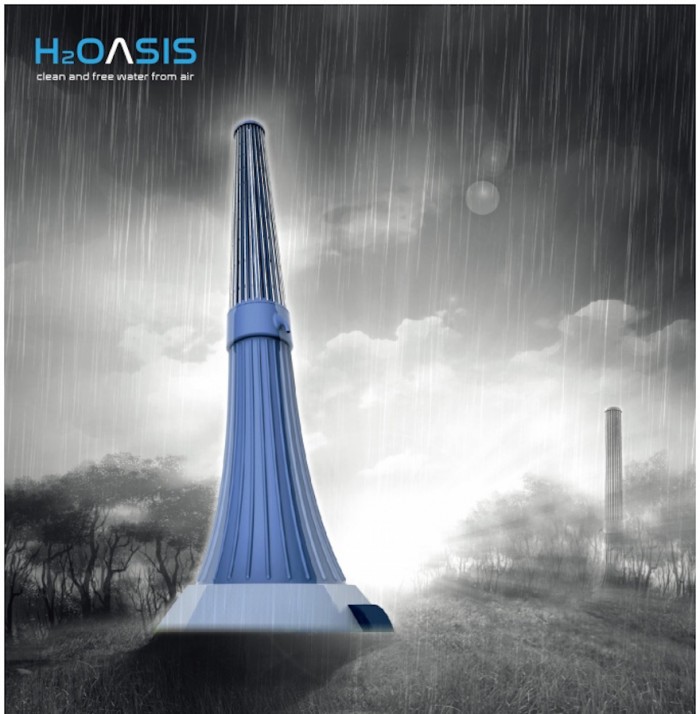Ivy Yan Ying Tai, a student at the Hong Kong Polytechnic University has found a way to collect water in Hong Kong’s hot countryside by using nature as the foundation of her design. The H2OASIS uses the basic principle of condensation: trapping humid air and turning it into water.
The inspiration came from recorded cases of heat stroke. People who went hiking on hot days, found it difficult to access fresh water on the countryside as there are no pipe systems on the mountains. “I started thinking of the basic principle of condensation, which also happens in nature,” says the young designer.
The H2OASIS captures rainwater and condensed water, which are then filtered by a ceramic filter. It’s a cylindrical structure composed of five parts: an upper tank, inner tank, lower tank, a connection ring and a concrete slab. It is operated by a foot pump. Many tiny metal tubes embed the outer wall of the structure.
During the day the sun heats these metal tubes, warming the incoming air. Water is condensed when the warm air meets the metal surface of the inner tank. At night the surface temperature of the tubes is lower than the surrounding air, which condenses the water. The tubes have holes that allow the condensed water to flow in one direction.
The H2OASIS is environmentally friendly; as it does not require any external electricity. It also means that hikers do not need to purchase water, and less plastic bottles will be used as a result.
Although the design hasn’t been actualised yet, its uses are manifold. It can serve as a landmark so hikers can locate themselves. It can also be implemented in countries where water is scarce.
More on water scarcity, and also its effects on Design Indaba's homebase, Cape Town:
Drop Drop app helps water conservation in drought-stricken South Africa
Architect Dong-Ping Wong to speak at Design Indaba 2019
Could wastewater biorefinery help in the Cape Town water crisis?







